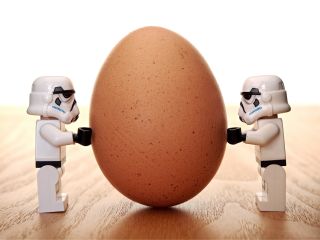STEAM education levels the playing field for students, according to Dr. Holly Gerlach, Solution Architect at LEGO Education.
“Simply stated, STEAM learning is an equalizer,” Gerlach said. “STEAM is such a critical component of not only where we presently are at this given moment, but when we think to the future, it is a critical component of how we are continuously evolving.”
Gerlach spoke during a recent Tech & Learning webinar hosted by Dr. Kecia Ray. The webinar also featured Jillian Johnson, a STEM Educator, Curriculum Designer, and Innovation Specialist & Learning Consultant at Andover Elementary School in Florida, and Daniel Buhrow, a 3rd-5th Grade Gifted & Talented STEAM teacher at Webb Elementary McKinney ISD in Texas.
Watch the full webinar here.
Key Takeaways
Foster Imagination
Johnson said that when students are being creative there’s a spark behind their eyes. “Sometimes the traditional form of education that we're used to, it stifles that spark, it stifles that creativity,” she said.
Encouraging STEAM and creativity can help students keep that spark while learning. “We're seeing how important that imagination is, how much we have to showcase that, and the students want to showcase that because those ideas set them apart from one another," she said. "When they are building something with their LEGO, it's them creating whatever they imagine and that is the most unique, precious quality that we have.”
Buhrow agreed. “We do a great job with our code and maker spaces to incorporate a lot of these team-centered ideas,” he said. However, students always want more and he advised educators to channel that joy for learning in these kinds of skills that we're looking for with these STEM careers.
Educators Don’t Need Coding Experience
Many teachers pause when they hear 'coding' and therefore shy away from teaching that area of STEM or STEAM, but it doesn’t have to be that way.
“It feels intimidating when you say 'code,'” Johnson said. “But you do not have to be an experienced coder in order to teach the skills that are necessary to learn code. So a lot of the things that a good educator is already doing within their class to teach their math standards or their ELA standards, those are the same types of strategies that you would use to teach code because really you're more of the facilitator or the coach guiding them to get there.”
Buhrow said this was exactly his experience with teaching code. “It's just a matter of having that flexible mindset going in, I had no formal training on it either. I started off by just taking one of the LEGO kits home and testing it out myself and seeing what worked,” he said. “There's always a kid in there who's going to be able to do this better than you will, and that's awesome.”
Highlight Diversity of Opportunity in STEAM
People don’t always realize just how many fields and subfields STEAM interacts with but it’s important to make students aware of those opportunities. “We need to show diversity in STEAM careers,” Buhrow said.
For instance, there is a whole world of food and environmental science of which many are unaware. “In food science you could be the packaging engineer, you could be the marketer. You could be the research chef,” Buhrow said. “You could be working in sustainability and working with new materials on how to get rid of cardboard.”
Get Started With Your STEAM Program Today
Educators interested in starting to put more of an emphasis on discovery-based STEAM learning often hesitate before implementing lessons, but the panelists urged teachers to jump in.
Gerlach said teachers can find opportunities to change the way they’re teaching their current curriculum requirements by looking to other educators and by implementing new STEAM lessons in smaller increments.
The most important step to take, however, is that first step. “I always say you have to start somewhere,” Gerlach said. “What is this small thing that we can start today because the best day to change something or to try something is today."
